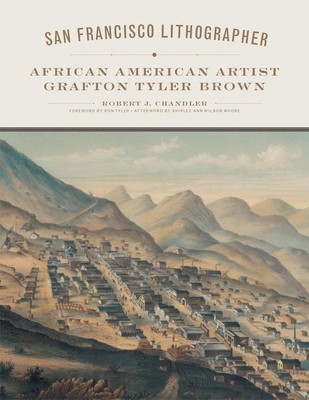
- We will send in 10–14 business days.
- Author: Robert J Chandler
- Publisher: University of Oklahoma Press
- ISBN-10: 0806144106
- ISBN-13: 9780806144108
- Format: 21.6 x 27.9 x 2.3 cm, hardcover
- Language: English
- SAVE -10% with code: EXTRA
Reviews
Description
Grafton Tyler Brown--whose heritage was likely one-eighth African American--finessed his way through San Francisco society by passing for white. Working in an environment hostile to African American achievement, Brown became a successful commercial artist and businessman in the rough-and-tumble gold rush era and the years after the Civil War. Best known for his bird's-eye cityscapes, he also produced and published maps, charts, and business documents, and he illustrated books, sheet music, advertisements, and labels for cans and other packaging.
This biography by a distinguished California historian gives an underappreciated artist and his work recognition long overdue. Focusing on Grafton Tyler Brown's lithography and his life in nineteenth-century San Francisco, Robert J. Chandler offers a study equally fascinating as a business and cultural history and as an introduction to Brown the artist.
Chandler's contextualization of Brown's career goes beyond the issue of race. Showing how Brown survived and flourished as a businessman, Chandler offers unique insight into the growth of printing and publishing in California and the West. He examines the rise of lithography, its commercial and cultural importance, and the competition among lithographic companies. He also analyzes Brown's work and style, comparing it to the products of rival firms.
Brown was not respected as a fine artist until after his death. Collectors of western art and Americana now recognize the importance of Californiana and of Brown's work, some of which depicts Portland and the Pacific Northwest, and they will find Chandler's checklist, descriptions, and reproductions of Brown's ephemera--including billheads and maps--as uniquely valuable as Chandler's contribution to the cultural and commercial history of California. In an afterword, historian Shirley Ann Wilson Moore discusses the circumstances and significance of passing in nineteenth-century America.
EXTRA 10 % discount with code: EXTRA
The promotion ends in 15d.06:54:10
The discount code is valid when purchasing from 10 €. Discounts do not stack.
- Author: Robert J Chandler
- Publisher: University of Oklahoma Press
- ISBN-10: 0806144106
- ISBN-13: 9780806144108
- Format: 21.6 x 27.9 x 2.3 cm, hardcover
- Language: English English
Grafton Tyler Brown--whose heritage was likely one-eighth African American--finessed his way through San Francisco society by passing for white. Working in an environment hostile to African American achievement, Brown became a successful commercial artist and businessman in the rough-and-tumble gold rush era and the years after the Civil War. Best known for his bird's-eye cityscapes, he also produced and published maps, charts, and business documents, and he illustrated books, sheet music, advertisements, and labels for cans and other packaging.
This biography by a distinguished California historian gives an underappreciated artist and his work recognition long overdue. Focusing on Grafton Tyler Brown's lithography and his life in nineteenth-century San Francisco, Robert J. Chandler offers a study equally fascinating as a business and cultural history and as an introduction to Brown the artist.
Chandler's contextualization of Brown's career goes beyond the issue of race. Showing how Brown survived and flourished as a businessman, Chandler offers unique insight into the growth of printing and publishing in California and the West. He examines the rise of lithography, its commercial and cultural importance, and the competition among lithographic companies. He also analyzes Brown's work and style, comparing it to the products of rival firms.
Brown was not respected as a fine artist until after his death. Collectors of western art and Americana now recognize the importance of Californiana and of Brown's work, some of which depicts Portland and the Pacific Northwest, and they will find Chandler's checklist, descriptions, and reproductions of Brown's ephemera--including billheads and maps--as uniquely valuable as Chandler's contribution to the cultural and commercial history of California. In an afterword, historian Shirley Ann Wilson Moore discusses the circumstances and significance of passing in nineteenth-century America.


Reviews